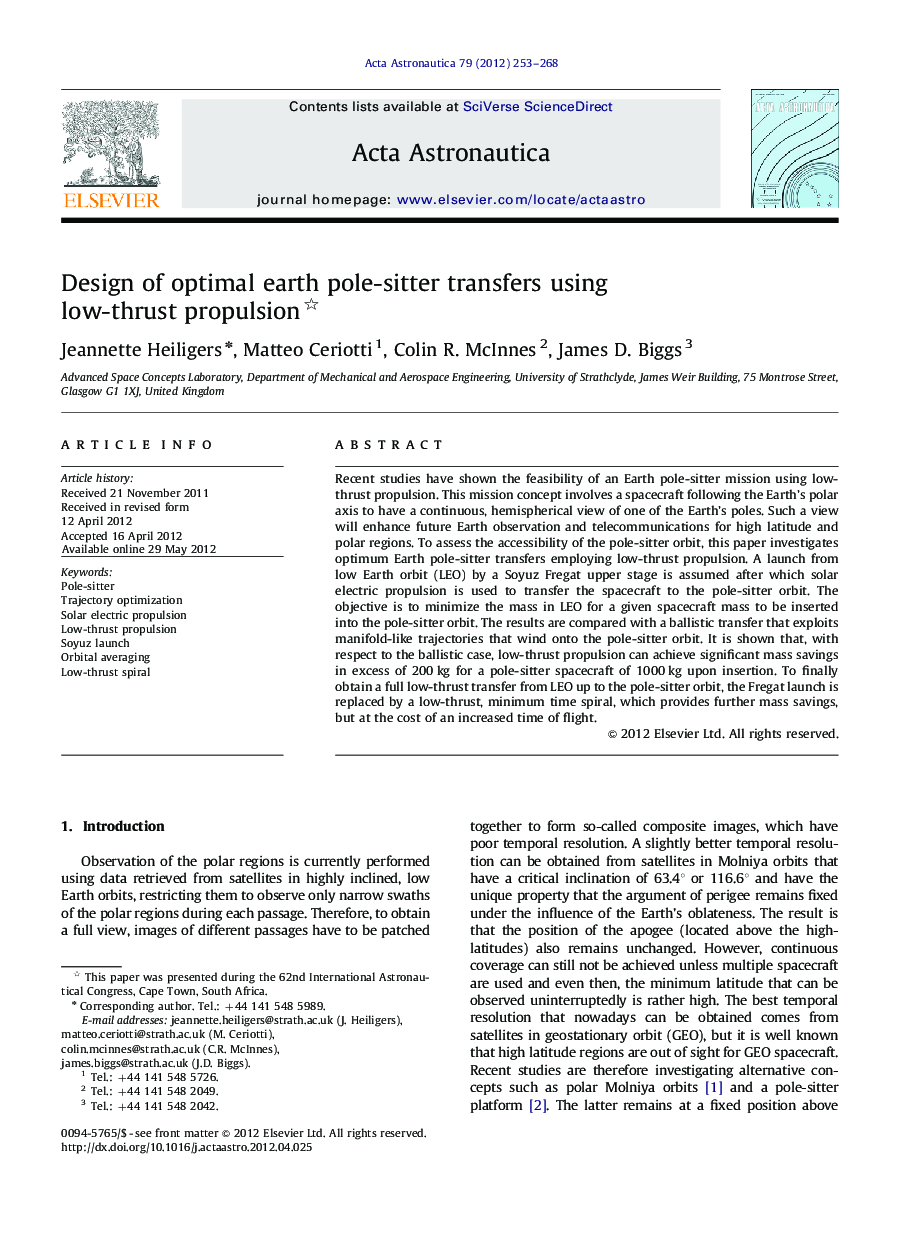| کد مقاله | کد نشریه | سال انتشار | مقاله انگلیسی | نسخه تمام متن |
|---|---|---|---|---|
| 1715315 | 1519969 | 2012 | 16 صفحه PDF | دانلود رایگان |

Recent studies have shown the feasibility of an Earth pole-sitter mission using low-thrust propulsion. This mission concept involves a spacecraft following the Earth's polar axis to have a continuous, hemispherical view of one of the Earth's poles. Such a view will enhance future Earth observation and telecommunications for high latitude and polar regions. To assess the accessibility of the pole-sitter orbit, this paper investigates optimum Earth pole-sitter transfers employing low-thrust propulsion. A launch from low Earth orbit (LEO) by a Soyuz Fregat upper stage is assumed after which solar electric propulsion is used to transfer the spacecraft to the pole-sitter orbit. The objective is to minimize the mass in LEO for a given spacecraft mass to be inserted into the pole-sitter orbit. The results are compared with a ballistic transfer that exploits manifold-like trajectories that wind onto the pole-sitter orbit. It is shown that, with respect to the ballistic case, low-thrust propulsion can achieve significant mass savings in excess of 200 kg for a pole-sitter spacecraft of 1000 kg upon insertion. To finally obtain a full low-thrust transfer from LEO up to the pole-sitter orbit, the Fregat launch is replaced by a low-thrust, minimum time spiral, which provides further mass savings, but at the cost of an increased time of flight.
► Optimal transfers from low Earth orbit to a pole-sitter position are investigated.
► Low-thrust transfers outperform ballistic transfers regarding mass required in LEO.
► For a 1000 kg pole-sitter spacecraft 5647 kg is required in LEO for a Soyuz launch.
► Performance is improved by replacing upper stage transfer by low-thrust spiral.
► Low-thrust spiral requires only 1285 kg in LEO at cost of increased time of flight.
Journal: Acta Astronautica - Volume 79, October–November 2012, Pages 253–268